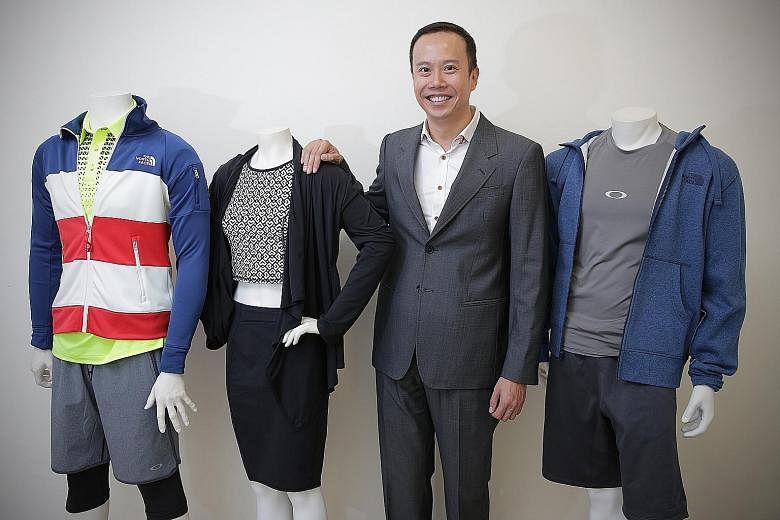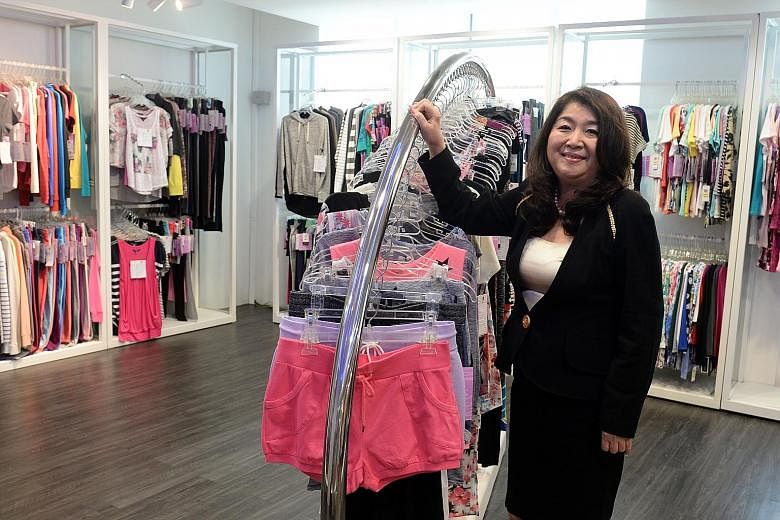Most garment manufacturing factories may have moved out of Singapore over the years, but the textile and apparel sector here is by no means a sunset industry.
That the market was estimated to be worth $6.3 billion in 2013 - around its value in 2011 - is proof enough of its resilience.
Many local firms have moved garment production to lower-cost countries in the region but run the operations from headquarters here.
Sing Lun Holdings, for example, operates 13 manufacturing facilities overseas - six in Vietnam and the rest in Cambodia, Indonesia, Malaysia, Sri Lanka and China.
"We try to help the brands mitigate their sourcing risks, we become their multinational sourcing partner," chief executive Mark Lee said.
Sportswear accounts for 70 per cent of Sing Lun's business, manufacturing "technical and performance" clothing for popular brands such as Under Armour, Puma and The North Face. Sing Lun's turnover was US$165 million (S$232 million) last year. Revenue could come in at between US$235 million and US$250 million this year.
Hopes are high about a promising new product the firm is developing with a company in Britain - "washable sensors" that can be applied across garment types. Think of it as a fitness tracker that can be built into sportswear.
Mr Lee said: "Now the word is 'inno-facturing', which is literally marrying innovation with design and manufacturing."
And it is this push to stay ahead of the curve - whether it is material innovation or new production techniques - that helps Singapore firms remain competitive, according to the Textile and Fashion Federation Singapore.
Ghim Li Group founder Estina Ang agrees, saying the company has had to adapt constantly.
She started the company in Singapore in 1977 with $3,000 and just six sewing machines. Today, its annual turnover is US$200 million to US$250 million. It offers a range of services, including fabric innovation, product design, manufacturing and market intelligence.
"Clients want strategic partners these days. For example, we help them forecast the new trends, which markets to push into and at what price so they can get a good profit margin," she said.
Its customers include Macy's, Aeropostale, Target and Walmart.
The home-grown company has a contracted manufacturing network of five garment factories in Cambodia, Indonesia, Malaysia and Sri Lanka. Around 30 per cent of the fabric used in these factories comes from Ghim Li's mill in Malaysia - an operational strategy that benefits clients.
"That cuts lead time by two weeks, compared with having to get the fabric from China," said Madam Estina.
And business prospects look bright as Sing Lun and Ghim Li stitch together plans to take advantage of the Trans-Pacific Partnership (TPP) trade pact that seeks to lower tariffs among 12 member countries. Ghim Li is investing US$10 million to set up a factory in Vietnam next year.
"Vietnam is in the TPP and by having a factory there, it will help facilitate trade with our clients in the US, for example, which is also a member of the TPP," Madam Estina noted.
The lower tariffs could reap potential savings of 16 to 34 per cent for its clients, depending on product category, she added.
HSBC Singapore told The Straits Times that the TPP will open corporates here to 25 per cent of global trade, in markets in South-east Asia, Australasia and the Americas.



